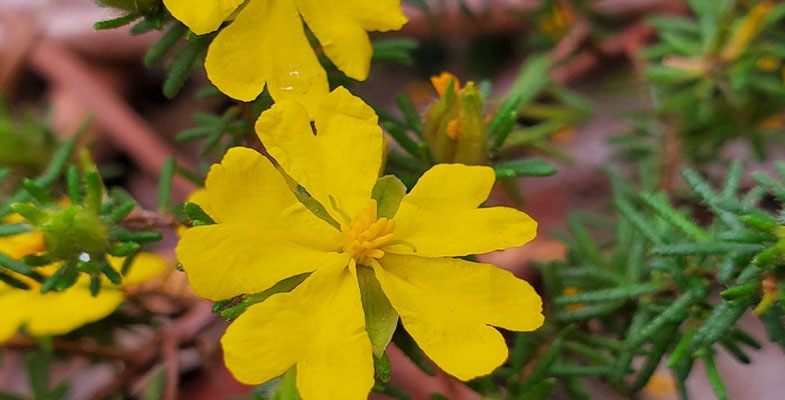On 10 May 2022 Chantelle Doyle gave our members a presentation on her extensive PhD work on conserving Hibbertia spanantha. Her work is also investigating threatened species conservation through the practice of translocation. Unfortunately it is inevitable that rare plants are destroyed when a development site is cleared unless they can be moved to a suitable site elsewhere.
H. spanantha was originally known from only four populations in the Sydney Basin Bioregion and is on the Threatened Species Recovery Hub Hottest 100 list of plants most at risk of extinction.
Chantelle’s talk described her analysis of:
- What are the best methods for vegetative and seed propagation of H. spanantha?
- What are the best soil and pre planting treatments?
- What post planting maintenance is required?
This information together can inform the key factors to consider when implementing conservation actions and identify challenges to following best practice translocation guidelines.
The recent issue of the Friends of Lane Cove National Park newsletter, Regenavitis reports on the work of park staff and volunteers in helping with the Ryde planting near the crematorium. They will help care for the plants in the long term through weed suppression and, potentially, ecological burns to facilitate a self-sustaining population through natural recruitment.
Annual research grant
STEP has awarded our annual research grant to Chantelle to assist her with her work. Funds from STEP will enable ongoing monitoring of the three translocated populations (ex situ population at Hornsby and augmentations at Ryde and Cheltenham).

